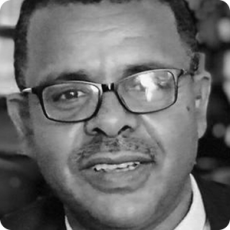Every year, hundreds of people lose their lives, homes and assets because of disasters related to meteorological, hydrological and climate hazards. As the definition of disaster risk suggests, any potential loss of a human life or damaged assets that occur as a consequence of hazards will set economic and social development back by years, if not decades. But Mother Nature is not the only cause of disasters. Human activities represent a major factor that can also bring about disaster.
The better-known examples of disaster risk include earthquakes, floods and cyclones followed by man-man disasters such as wars, industrial accidents, etc. The international community has invested tremendous efforts into disaster risk management to effect risk reduction.
Disaster risk reduction (DRR) is high on the policy agendas of many government donors of official development assistance (ODA), often in conjunction with concerns around increasing investments in emergency preparedness, climate change adaptation and the broader aspiration of building resilience to shocks. This comes at a time when the incidence of natural disasters related to climate change is on the rise.
So, what is the real meaning of the concept of disaster risk? What is disaster risk management? What does the concept of DRR entail? How do governments approach risk reduction?
We asked international humanitarian aid and emergency experts to share their opinions, practices and examples regarding DRR via several questions.
How do you define Disaster Risk Reduction?

“Generally, in my opinion, Disaster Risk Reduction (DRR) involves developing the community’s resilience to shocks and ensuring that the community and its institutions can predict, prevent, absorb and manage disaster risks (loss of life, damage to livelihood and others) caused by natural and man-made hazards such as drought, flood, displacement and others.”

“Disaster risk reduction involves initiatives that can contribute to reducing the risks posed by hazards by analyzing the causal factors of disasters, and thus reduce a community’s exposure to those hazards and lessen the vulnerability of people and their livelihoods. It normally addresses the underlying drivers of disaster and promotes community resilience to anticipated disasters.”

“Disaster risk reduction is defined as the concept and practice of reducing disaster risks through systematic efforts to analyze and manage the causal factors of disasters, including through reducing exposure to hazards, lessening the vulnerability of people and property, the wise management of land and the environment and improved preparedness for adverse circumstances.”
What represents good management of DRR?

“Good management of disaster risk reduction is represented by a satisfactory awareness and acknowledgment by both the elite and bureaucrats that disasters are real and not imaginary or political scenarios created by the vulnerable to win political, social and economic sympathy. With this awareness, it is easy for the elite and bureaucrats to support the indigenous risk reduction initiatives put in place by the socially vulnerable who are also mostly (the) poor.”

Good management of disaster risk reduction should include all sectors of society, that is, public, private, academia, and especially, civil society and community organisations. All these groups have something in specific to contribute to a better understanding of risks, and the measures needed to reduce such risks. Then, the good management of DRR should consider the multiplicity of actors that participate in its governance process and assigning responsibilities and duties to each one of them.

“Prevention, for instance relocating exposed people and assets away from a hazard area. Mitigation, for instance constructing flood defenses, planting trees to stabilize slopes and implementing strict land use and building construction codes. Transfer, for instance, insurance. Preparedness, for instance installing early warning systems, identifying evacuation routes and preparing emergency supplies.”
What examples of good practices for DRR can you identify?

“An example of good practice is integrating disaster risk reduction into government policies, strategies and practices particularly integrating disaster risk reduction into government development plans at all levels. Moreover, the allocation of resources by governments and international communities for the implementation of disaster risk reduction as well as capacity building of key DRR actors to undertake intentional integration of DRR into actions represent good practice.

“An early warning system, i.e. a set of capacities needed to generate and disseminate timely and meaningful warning information to enable individuals, communities and organizations threatened by a hazard to prepare and to act appropriately and in sufficient time to reduce the possibility of harm or loss. Emergency management, i.e. the organization and management of resources and responsibilities for addressing all aspects of emergencies, in particular preparedness, response and initial recovery steps. Risk assessment, i.e. a methodology to determine the nature and extent of risk by analyzing potential hazards and evaluating existing conditions of vulnerability that together could potentially harm exposed people, property, services, livelihoods and the environment on which they depend.”

“Various models in disaster management and risk management have evolved over time from a reactive disaster response approach to a proactive disaster risk reduction approach. These models include reactivity, the disaster continuum/cycle, the concept of expand and contract, the pre-during-post linear model, proactivity, the pressure and release/crunch model and a risk management formula. The evolution of these models is not systematic where one is used before another emerges.
How has your organization been involved in DRR?

“I work with the county directorate of emergency and disaster response in West Pokot County, Kenya. It is the lead organization in the coordination of disaster response, preparedness and mitigation.”

“My previous organization, the Amhara Region Disaster Prevention and food security organization, played a strategic role including, prior to the disaster, analyzing the regular early warning data and disseminating information to government bureaus and NGOs, coordinating the disaster plan in collaboration with UN agencies such as UNOCHA and WFP, mobilizing resources and conducting preparedness and prevention works such as the construction of a flood prevention for identified vulnerable areas, the purchasing of early contingency food and non-food items purchasing, building community awareness, linking DRR activities with other development activities such as PSNP (productive safety net program). There are just a few activities among many others.

“My professional and academic training institution, the African Centre for Disaster Studies, North West University in South Africa that I am associated with as a research associate and PhD candidate, is involved in disaster risk reduction through consultancy work and the provision of short term and long-term professional, graduate and post-graduate level training. Consultancy is undertaken at local, sub-national, national, other countries, sub-continents, the whole African continent and global levels.”
Check more than 100 job opportunities related to Disaster Risk Reduction here.

